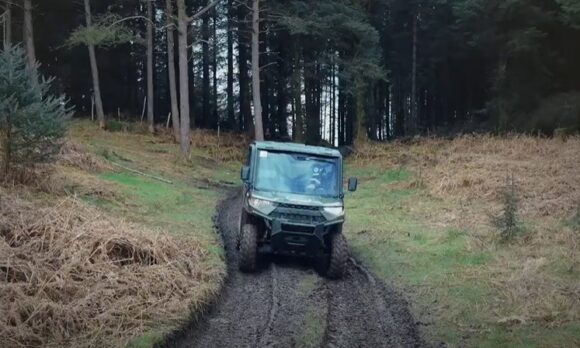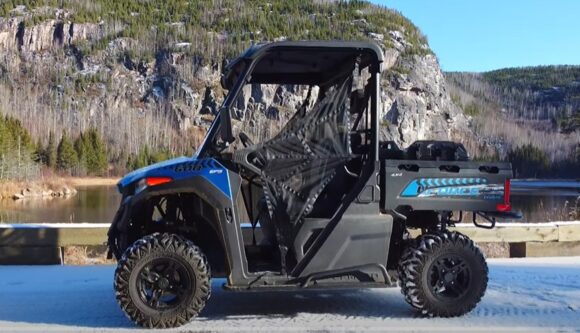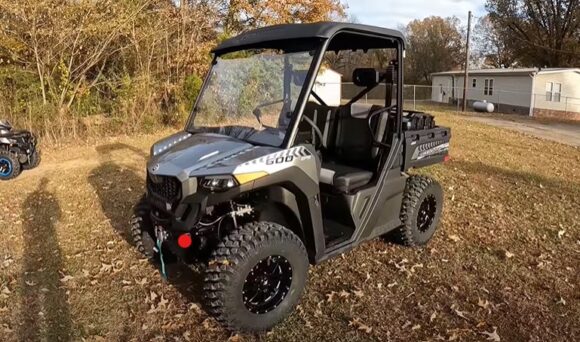Polaris has introduced different Ranger models with more capabilities over time. Off-roaders love the versatile Ranger. However, some Ranger models have mechanical difficulties that are expensive and time-consuming to correct.
Even though the Polaris Ranger is a great UTV for commuting, several model years have had a number of big problems. According to user opinions, you should not buy a Polaris Ranger from 2004, 2010, 2013, 2014, 2016, 2021.
Below I will explain which Polaris Ranger years to avoid, along with the reasons.
Polaris Ranger Years to Avoid

It may cost as much as a brand-new, top-of-the-line UTV if you do not know which model year of the Polaris Ranger to avoid when purchasing a new vehicle.
Avoid the following years’ models of Polaris Rangers. However, some models have fewer problems than others.
The following models are the most problematic.
1. 2004 Model
The 2004 Polaris Ranger has a bad reputation for having some common issues:
Transmission problem:
Numerous Ranger owners have reported transmission failures and the shifting issue occurs often.
The shifting cable connects the gear shifter to the transmission, and if it is worn or damaged, it can cause difficulty shifting gears.
This can be costly to remedy and may necessitate a complete transmission replacement.
Overheating:
The Ranger’s engine has been known to overheat, especially after being used for a long time.
This could hurt the engine and transmission, and it could even start a fire.
Electrical troubles:
Some Ranger owners have had electrical troubles like blown fuses and broken gauges.
2. 2010 Model
The most common issues reported by owners of the 2010 Ranger include:
Transmission failure:
The most common transmission problem with the Polaris Ranger is a defective transmission input shaft bearing.
This can cause the transmission to grind when shifting and can cause it to become stuck in gear.
It also makes noticeable noise.
Fuel system problem:
Some Ranger owners have reported problems with the fuel system, including clogged injectors and fuel pump malfunctions.
A clogged or dirty fuel filter can cause a number of issues, including decreased fuel flow, engine stalling, and poor performance.
Overheating:
The Ranger’s engine has been known to overheat, particularly after extended use.
The most common cause of overheating in a Polaris Ranger is a low coolant level.
This can happen if the coolant is not changed and refilled regularly, or if there is a leak in the system.
3. 2013 Model
Customers of 2013 Rangers complained about the following issues:
Steering Problem:
Ranger steering issues are usually caused by trash or rocks in the steering mechanism.
It may be caused by a worn ball joint or steering rack and suspension or alignment issues.
Overheating:
If the engine has too little airflow or is clogged with dirt and debris, it overheats.
Improper maintenance and failure to replace worn parts like spark plugs or air filters can cause overheating. An oil leak or broken fan belt causes it too.
Starter Problem:
Owners of a 2013 Polaris Ranger experienced starter issues, resulting in the engine not turning over when the ignition is engaged.
Possible causes include a dead battery, corroded connections, low voltage from the alternator, a bad starter solenoid, or a faulty starter motor.
Backfires:
Backfiring happens when unburned fuel ignites in the exhaust, resulting in a loud popping sound.
Common causes include incorrect ignition timing, a faulty carburetor, a vacuum leak, worn spark plugs, and a faulty exhaust valve or gasket.
4. 2014 Model
Problems typically encountered with this model include:
Starting problem:
The 2014 Polaris Ranger may suffer from difficulty starting due to a faulty starter motor, bad spark plug, clogged fuel filter, stuck choke, weak fuel pump, or low battery power.
Charging issue:
Polaris Ranger owners have reported battery drain even after being fully charged.
This is caused by faulty wiring, a bad alternator, or corroded battery terminals.
Idle problem:
The most likely cause of the 2014 Polaris Ranger having an idle problem is a dirty or faulty spark plug and idle air control (IAC) valve.
If it is dirty, stuck, or otherwise not functioning correctly, it can cause the engine to idle too low or too high.
5. 2016 Model
The most common issues of this model are:
Clutch problem:
A common issue with the Polaris Ranger 2016 is a clutch problem, causing power loss and difficulty moving the vehicle.
This can be caused by worn belts, improper adjustment, or insufficient lubrication.
Idle problem:
According to consumers, 2016 model can have idling issues.
A defective idle air control valve, vacuum leak, throttle body, mass airflow sensor, fuel injector, spark plug, oxygen sensor, or engine coolant temperature sensor might cause these problems.
Engine stalling:
Engine stalling or running rough can be caused by a clogged fuel filter, faulty spark plugs, an improperly adjusted carburetor, a faulty fuel pump, a malfunctioning ignition coil, low oil levels, a weak battery, or vacuum leaks in the intake manifold.
Noisy:
Polaris Ranger 2016 engine noise is annoying. This might cause engine banging or a loud exhaust note.
Running at higher RPMs for a long time causes excessive heat and vibration, which can damage engine components and make the engine noisier and less efficient.
6. 2021 Model
The following are the most frequent problems with this model:
Cooling fan issue:
The 2021 Polaris Ranger’s cooling fan is a frequent point of failure. Due to overheating and decreased performance, this problem can cause your car to shut off without warning.
Both faulty wiring and fan motors might cause this issue.
Engine bogging:
If your Polaris Ranger 2021 isn’t accelerating as it should, it could be a case of engine bogging.
This happens when the engine isn’t delivering enough power or experiences a sudden loss of power.
It may be caused by a spark plug misfiring, fuel system issues, air filter blockage, or other issues.
Best Model Years for Polaris Ranger
Not all the models of the Polaris Ranger are bad. Some of the models perform extraordinarily and satisfy customer desires.
Appreciated models are:
1. 2020 Model
The all-new Ranger 1000 and Ranger crew 1000 deliver superior performance and value with their ProStar 1000 SOHC engine and improved chassis design, offering 61 HP, 55 lb-ft of torque and a class-leading 2,500 lb towing capacity.
2. 2018 Model
The Polaris RANGER XP 1000 was reimagined with over 100 owner-inspired improvements, such as 82 hp, 2,500 lb towing capacity, 13 in ground clearance, 11 in suspension travel, and the Pro Shield cab system for 3x better dust protection than competitors.
3. 2009 Model
The 2009 model equipped with the front of the vehicle was given dual A-arm suspension, and the rider’s comfort was improved.
Power and performance also kept getting better as bigger powertrains were added.
Are Polaris Rangers Reliable?
In every field, there are both market leaders and flops. In this regard, Polaris Ranger is not unique.
The Polaris Ranger is widely acknowledged as one of the most dependable UTVs available. It may cost more than comparable UTVs initially, but it will serve you well for many years.
The popularity of the Polaris Ranger means that replacement components are quite inexpensive. This makes the vehicle easier to maintain.
The best Polaris Ranger models aren’t just dependable; it also boasts plush padded seats, enough room for cargo, and the ability to traverse a wide range of terrains.
Polaris Trailblazer 250 Problems
Polaris Sportsman 550 Problems
Sources:
Polaris Ranger Versions to Avoid When Buying Used UTV


